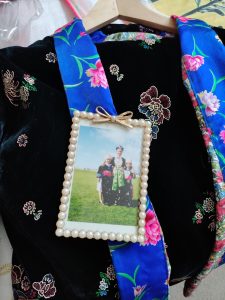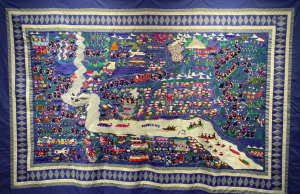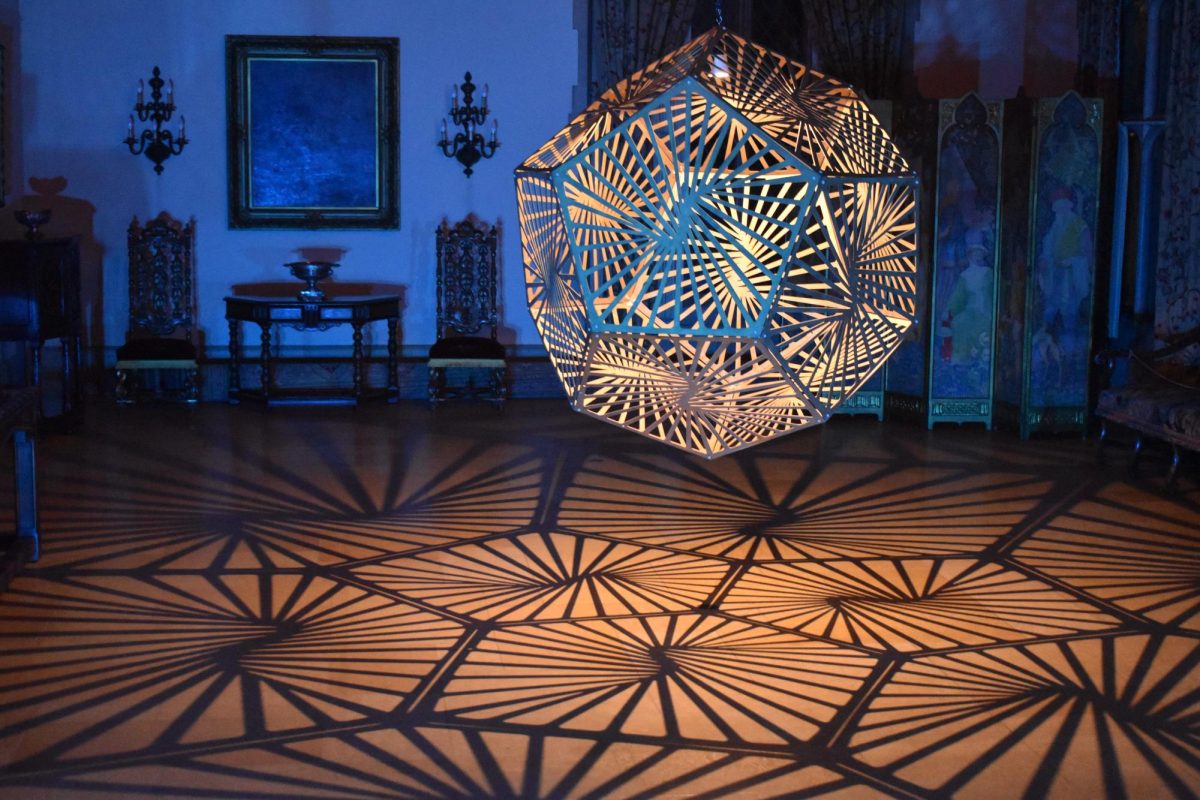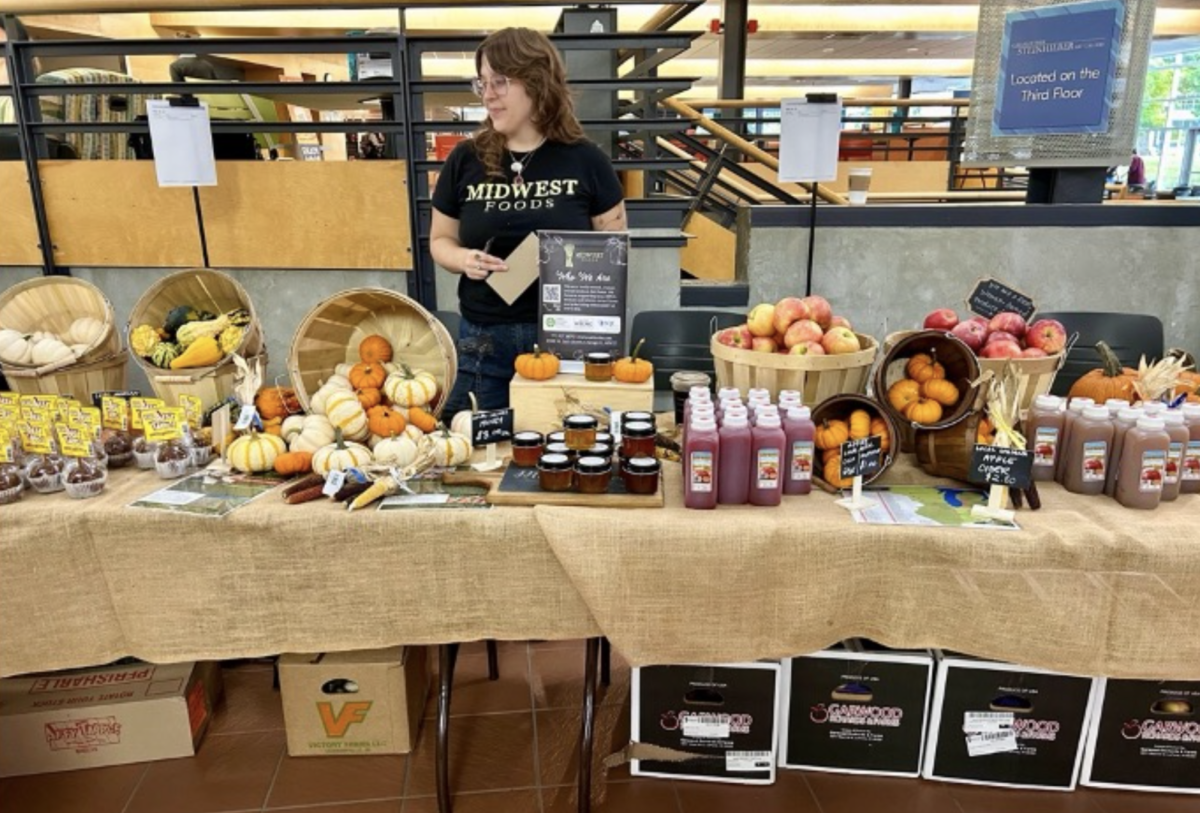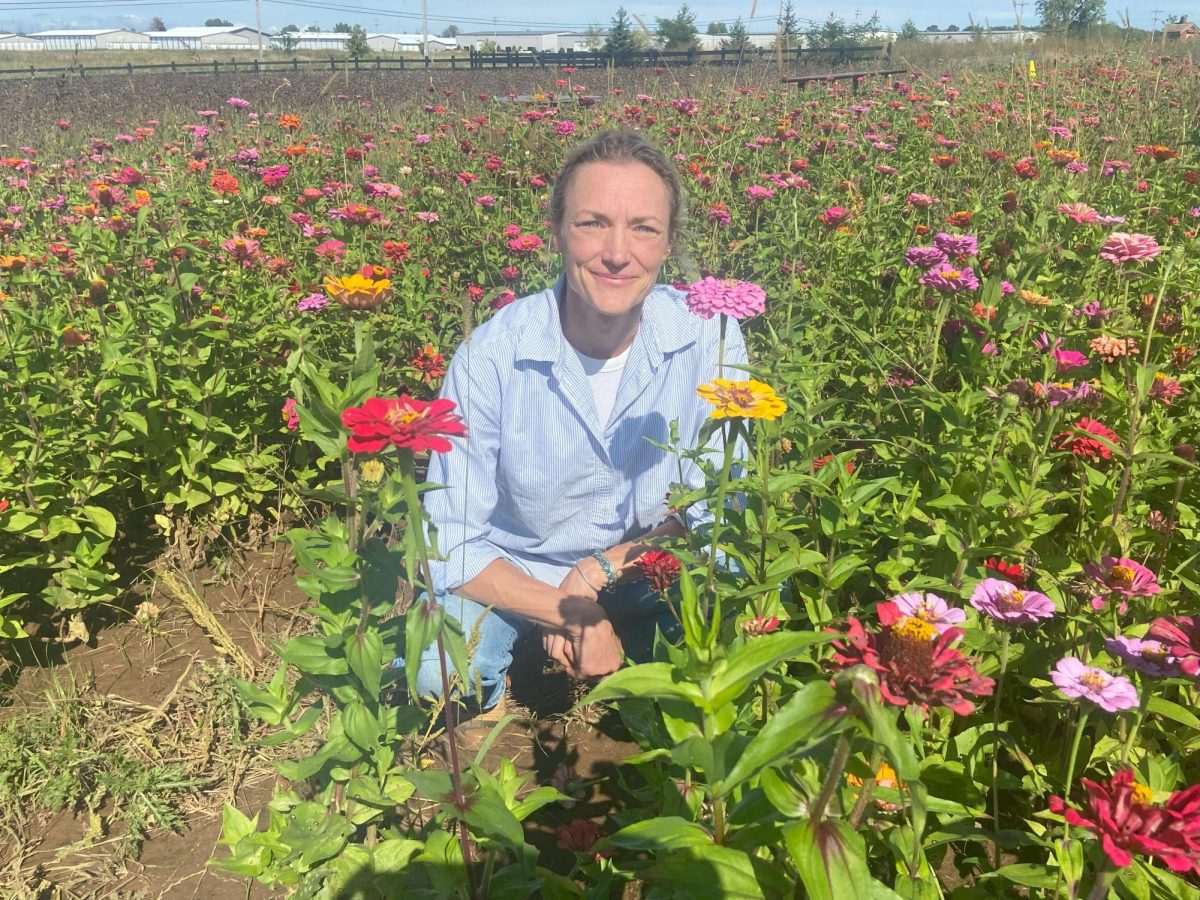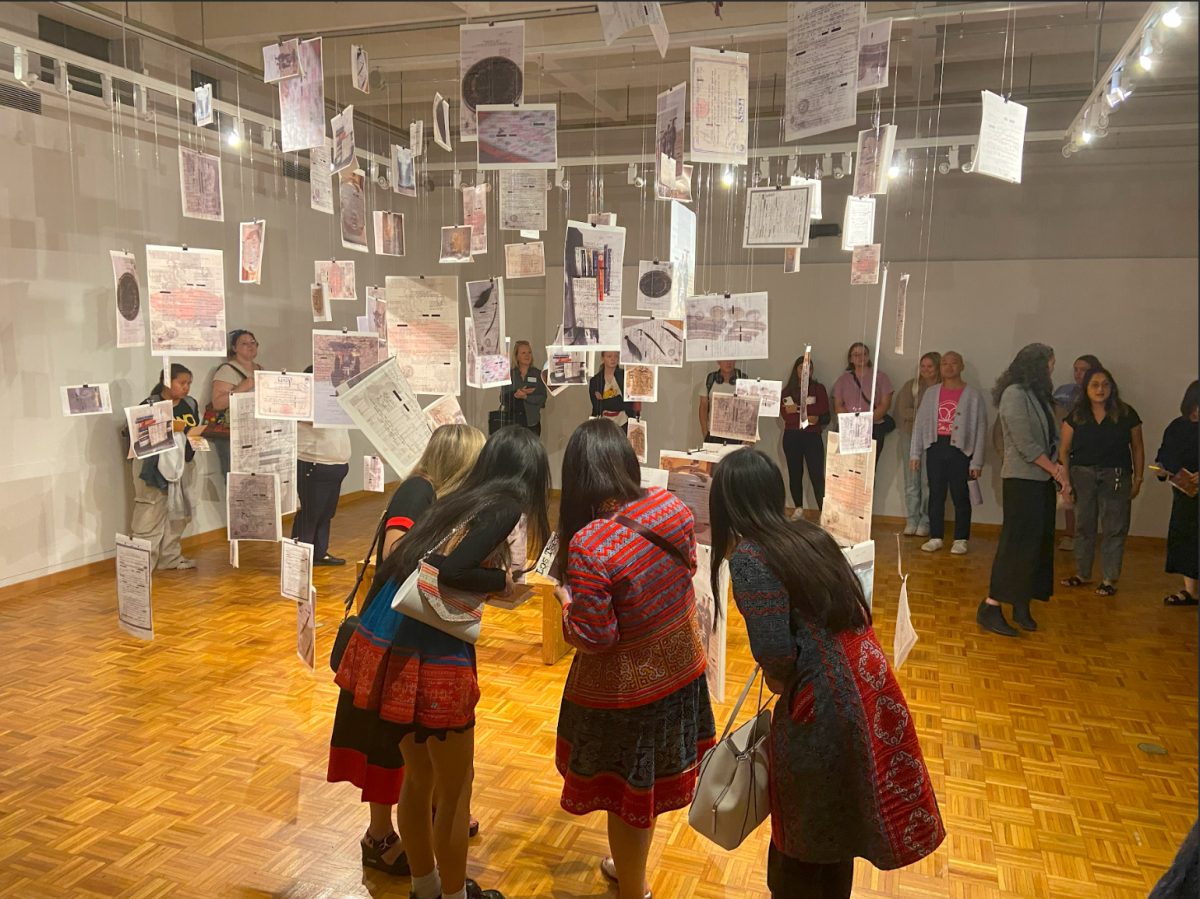The Paine Art Center and Gardens welcomed their current exhibit, “Mao Lore: a Journey through Hmoob Paj Ntaub,” which was co-curated by UW Oshkosh professor Chong Moua.
“Having a chance to see these exhibits just enhances the vibrancy of our community and especially the region,” professor and Hmong historian Moua said.
The exhibit features over two dozen pieces of Hmong textiles called Paj Ntaub created by Green Bay artist Mao Lor.
In a refugee camp in Thailand, Lor began her craft as a young girl after the Vietnam War and the Secret War of Laos forced her to flee her home country of Laos.
Her work ranges from smaller, decorative pieces to large story cloths, which include highly detailed images and phrases stitched into the base fabric. Many of Lor’s story cloths are based on traditional folk tales and illustrations created by other Hmong people in refugee camps.
Moua said these illustrative story cloths were first created as a way for Hmong refugees to make ends meet.
“The general story is that they needed to find a way to make some kind of income to support their families, because the conditions in the camp were poor,” Moua said. “I think food rations were only provided like two or three times a week. And so what were you going to eat the rest of the week, right?”
Moua said these pieces often told the stories of the wars going on and how this affected Hmong people during that time.
“I think they started telling their own stories and using cloth, that needle and thread, as a way to tell the story of how they got to the camps in a narrative way,” she said.
One stand-out work is a large cloth telling the story of Lor and her family traveling from Laos to a Thai refugee camp. Another must-see piece is a collaboration between Lor and artist Xiong/Ntxawg Xyooj, who worked together to create an intricate baby-carrying device.
Visitors can also view a video documentary produced by filmmaker Soua Vang, which includes interviews with Lor and Xyooj.
The exhibit is fully created and curated by Hmong artists and historians, a decision made by the Paine to maintain authenticity of Hmong culture.
To make the exhibit more accessible for Hmong people, all of the descriptions and biographies in the gallery are written in English as well as in Hmong.
Noell Dickmann, the marketing manager at the Paine, said that there is a large Hmong presence in Oshkosh and this culture should be shared.
“There’s a huge community of Hmong people here,” Dickmann said. “I think it’s a really awesome opportunity to celebrate the community, [and] to share their art with the community because it might not be something people have experienced before. For the Paine to be able to present that, that’s just part of our mission.”
One of the Paine’s main goals is to focus on diversity within their galleries, Dickmann said.
“It’s also part of our mission to be really inclusive and to do shows that are from minority groups and to bring more people to the Paine that are minorities,” she said. “I think traditionally, art is seen as sort of a ‘white person thing’ …. it’s a really good opportunity to invite people in and make them feel welcome.”
Moua said featuring artists from diverse backgrounds allows people in marginalized groups to relate more with exhibits.
“I think it’s really important for places like the Paine to feature local artists and also to feature artists from underrepresented communities so that they get to see themselves in these spaces.”
In addition to the Paj Ntaub, the exhibit also features Lor’s handmade stuffed animals, which she sells at local craft shows. On the second floor of the Paine, the exhibit continues to show the importance of cloth in Hmong cultures with textiles from the Moua’s wedding.
Moua and Choua Xiong, another Hmong studies professor at UWO, displayed clothes handed down from their mothers on their wedding days. This is a common Hmong tradition for women.
“The other story that we’re hoping Hmong textiles tell is that these are things people can pass down from one generation to another,” Moua said.
The exhibit will be on display through May 26. Adult admission is $12, while anyone under 18 can get in for $7. The Pj Ntaub exhibit will serve as a backdrop for the Paine’s annual Room of Blooms, which opens today.




